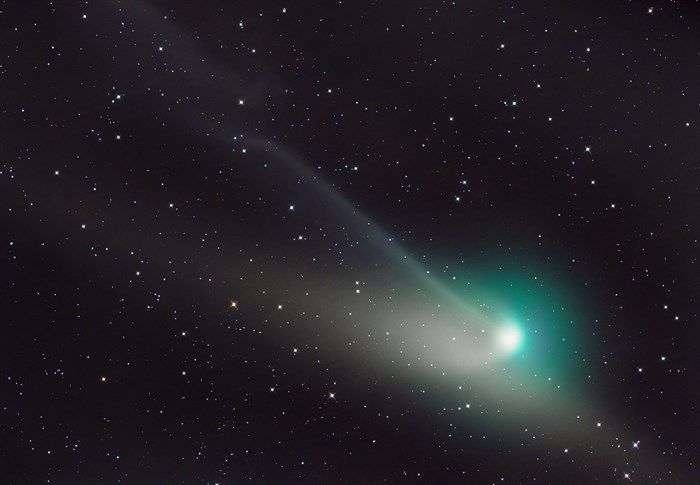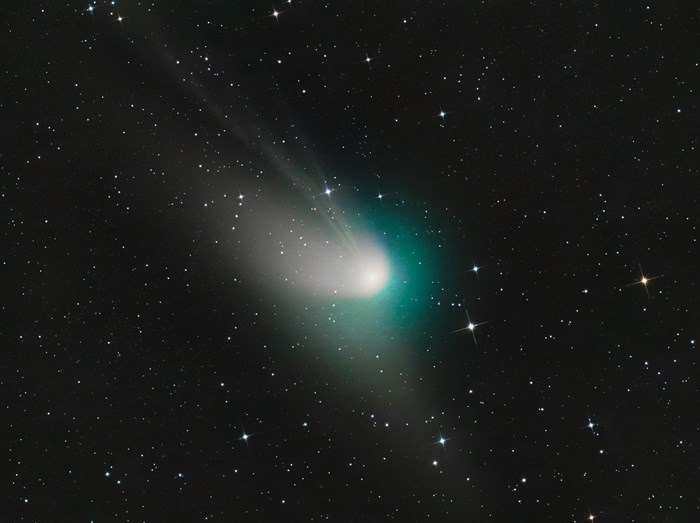
Debra Ceravolo captured this image of Comet C/2022 E3 from her home in Osoyoos on Jan. 21.
Image Credit: SUBMITTED/Debra Ceravolo
January 26, 2023 - 6:00 PM
A green-tailed comet is close enough to earth for Osoyoos photographer Debra Ceravolo to snap a couple sharp images of the phenomenon.
But capturing C/2022 E3 ZTF in such detail is not as easy as pointing and shooting.
To create such bright and crisp images of the comet, Ceravolo continuously snapped photos with exposures of one minute for an hour-and-a-half. Those images were then stacked together to diminish noise in the final product. But since everything in space is in motion, only about one-third of the photos were used in the stacking process, as the entire collection would cause some features to blur.
“It’s really tough to get a sharp image of a comet because the stars move independently of it,” she said.

Comet C/2022 E3 on Jan. 20.
Image Credit: SUBMITTED/Debra Ceravolo
“Similar to the aurora, after 30 seconds it looks really smeared, but in a five-second exposure you can see lots of streaks and structure.”
Ceravolo used a Canon R6 which was attached to a telescope designed by her husband, Peter Ceravolo. She began honing her skills as an astrophotographer 12 years ago to market his products.
Anybody interested in witnessing C/2022 E3 ZTF can currently get a good look at it with a pair on binoculars, Ceravolo said, as long as the sky is clear. She’s hopeful it will be visible with the naked eye by the end of January, but realizes the brightness of any comet is difficult to predict.
The comet’s position in the sky will be near the Little Dipper today, Jan. 26, and when it reaches its closest point to earth on Feb. 1, it can be found near the Camelopardalis constellation, according to space.com.
The best time to look for it is during the early hours of darkness before sunrise. And it’s expected to remain visible – at least through telescopes and binoculars – for much of February.
To contact a reporter for this story, email Dan Walton or call 250-488-3065 or email the editor. You can also submit photos, videos or news tips to the newsroom and be entered to win a monthly prize draw.
We welcome your comments and opinions on our stories but play nice. We won't censor or delete comments unless they contain off-topic statements or links, unnecessary vulgarity, false facts, spam or obviously fake profiles. If you have any concerns about what you see in comments, email the editor in the link above.
News from © iNFOnews, 2023